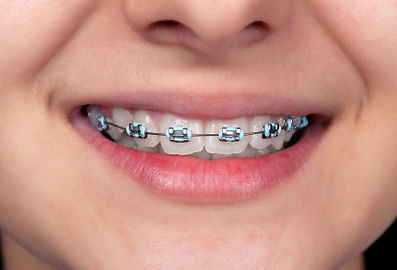Children Dentistry

Fluoride
Research shows that fluoride varnish is highly effective at reducing tooth decay if it is applied twice a year. Fluoride varnish should be applied at least twice yearly in all children.
Cavities form when there is a weakening in the mineral composition of the enamel of your teeth. Fluoride promotes the remineralization of these decalcified spots, therefore helping to prevent cavities. Low level of fluoride is found naturally in some bodies of water. Municipal water supplies are often fluoridated to a specific standard level. Fluoride can also be found in many household products such as toothpaste, mouth rinses, and even some bottled water.

Fissure Sealant
What are sealants?
Sealants are a safe and painless way of protecting your teeth from decay. A sealant is a protective plastic coating, which is applied to the biting surfaces of the back teeth. The sealant forms a hard shield that stops food and bacteria getting into the tiny grooves in the teeth and causing decay.

Glitter Coloured Tooth Fillings
Discover the magic yourself with our New Twinky sparking fillings !
These specially designed sparking colored fillings are made for children’s teeth. They are easy to use and release kid friendly fluoride against secondary cavities.
We offer seven harmless brilliant, shimmery colored fillings that glitter and make filling cavities fast, easy and fun.
Your child will be excited to choose from among lemon yellow, green, brilliant orange, ocean blue, passionate pink, and glistening gold or silver.
Now your children can look forward to their dental treatment with a generous sprinkling of sparkle in their fillings!

Tooth Coloured Fillings
You can choose tooth-coloured fillings to match the colour of your teeth, making them a natural-looking alternative to old amalgam fillings. The simplest type of aesthetic filling is what people commonly refer to as “bonding”. This filling is performed by the dentist in one single sitting and is comprised of a composite resin material (a mixture of glass and resin particles) that is placed into smaller cavities and bonded or adhered to the tooth chemically with special liquid “bonding agents”. They can be used for reshaping the front teeth, or even closing open spaces and of course new strong aesthetic fillings allowed us to use them in the back teeth too where the grinding and chewing applies great stresses on them.

Pulp Treatment (Pulpotomy)
Pulp therapy (pulpotomy) is the treatment of infected nerves and blood vessels in teeth. Pulp therapy generally becomes necessary for two reasons: either as a result of extensive tooth decay (dental cavities) or as the result of tooth injury. Failure to provide the necessary pulp therapy could result in your child experiencing pain, infection, swelling, or loss of the tooth.
Many cavities may be so deep that they extend to the nerve, often causing pain and discomfort. When this happens, the infected part of the nerve must be removed. The remaining healthy nerve will be left intact and medicated. The purpose of a pulpotomy is to extend the life of the baby tooth, thereby avoiding the need for extraction and a space maintainer, until the eruption of the permanent tooth.
In other words, the tooth can be preserved for chewing food and maintaining proper space for permanent teeth, as well as helping your child to preserve a healthy, happy smile.

Stainless Steel Crowns
The stainless steel crown provides an effective and practical way for restoring badly broken down baby and permanent teeth. While dentists in general would prefer to do small, traditional fillings, on occasion these fillings may not be expected to withstand the forces of chewing for a long enough period of time. Alternatively, the stainless steel crown is very durable and can be expected to provide good functional service for many years or until that time when the tooth is ready to fall out. On young permanent teeth the stainless steel crown can act as an excellent temporary filling and is often replaced with a porcelain crown once the child has reached adulthood.

Space Maintainers
Baby Teeth aren't just for chewing. Each one also acts as a guide for the eruption of the permanent tooth that replaces it. If a baby tooth is lost too early, the permanent tooth loses its guide. It can drift or erupt into the wrong position in the mouth. Neighboring teeth also can move or tilt into the space. This means that there may not be enough space for the permanent tooth to come in.
Space maintainers may be used:
-
If a primary tooth is lost before the permanent tooth is ready to come in.
-
If a permanent tooth is missing the maintainer keeps the space open until the permanent tooth comes in.

Early (Interceptive) Orthodontic Care
It's never too early to keep an eye on your child's oral development.
Your orthodontist can identify malocclusion (crowded or crooked teeth) or bite problems and actively intervene to guide the teeth as they emerge in the mouth.
Interceptive orthodontic treatment can prevent more extensive treatment later.
Your orthodontist checks the progress of your child’s bite and jaw development with routine dental examinations.
This early assessment of your child’s teeth may prevent extensive orthodontic work in his/her future.
